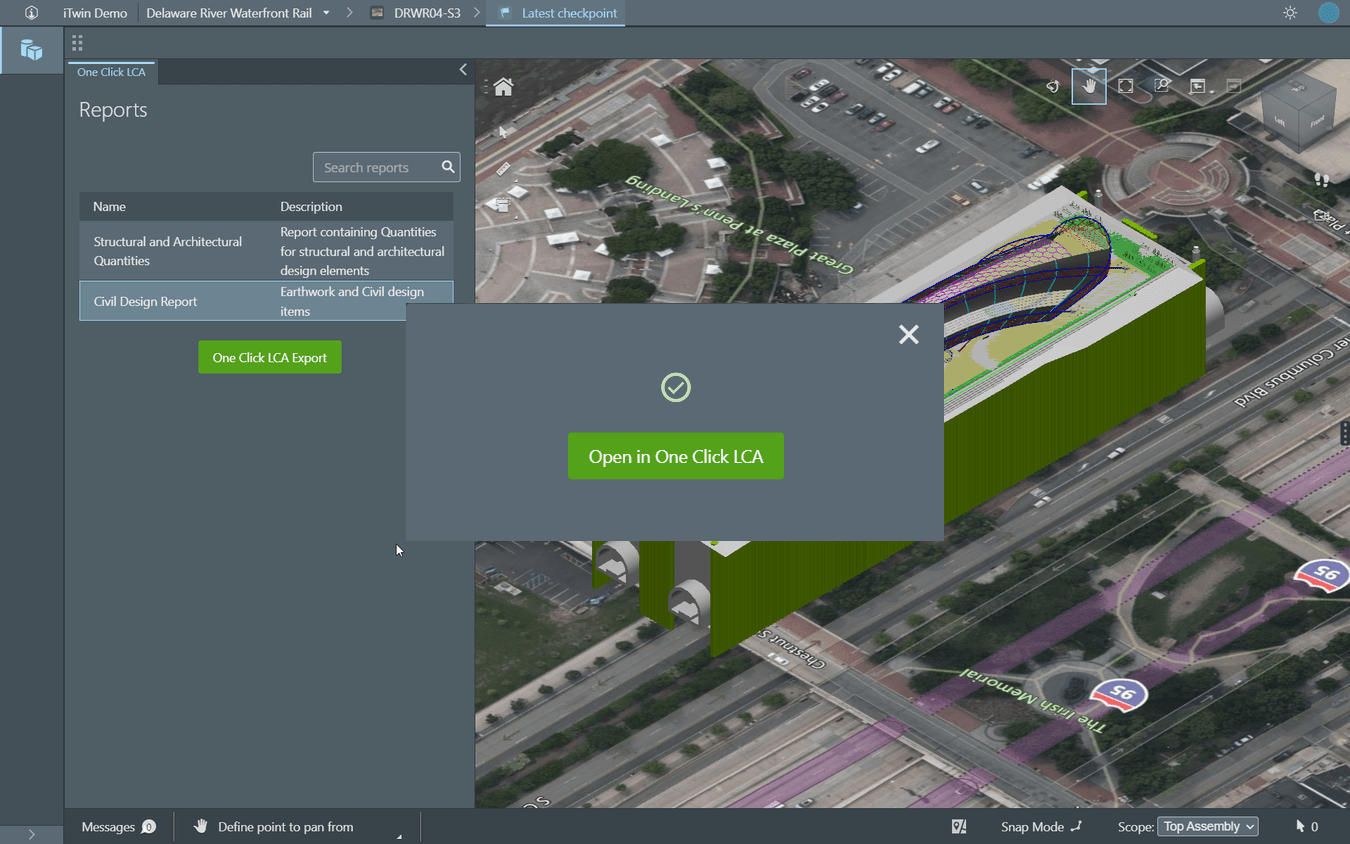Construction is inherently a resource-heavy and environmentally impactful endeavor. In recent years, measuring and reducing the impacts on carbon emissions and other negative environmental consequences (including material waste, etc.) have become a serious part of the conversation for design and construction firms. One key area of research and discussion is whether software, digital twins and more can help to reduce these impacts and create greener and more sustainable buildings.
As an infrastructure and engineering software company, Bentley Systems is no stranger to the challenges of sustainable infrastructure development. This month, they have announced the ability of integrated workflows for lifecycle assessment (LCA) and embodied carbon calculations within their iTwin platform, opening the door to a more integrated approach to sustainable construction.
Designers and sustainability engineers spend a significant amount of time assessing or reporting on the environmental footprint of infrastructure projects. With multiple design tools used in these projects, the typical LCA process can be time-consuming, especially when manually exporting and aggregating data from bills of quantity and bills of material. It can also be error-prone, requiring additional verification of successful ingestion by LCA tools.
The Bentley iTwin platform is an open, scalable, platform-as-a-service that enables project teams and owner-operators to create, visualize, and analyze digital twins of infrastructure assets. With the ability to integrate lifecycle assessment workflows with the Bentley iTwin platform, users will be empowered with new opportunities for environmental intelligence around embodied carbon and environmental footprints of linear infrastructure projects.
Users will be able to incorporate engineering data created by diverse design tools into a single view using the Bentley iTwin platform, generate a unified report of materials and quantities and share it with One Click LCA via cloud synchronization. This integration gives users the ability to analyze environmental footprints, accelerate environmental reporting, perform project optioneering, and optimize the selection of materials and products.
Digital twins of infrastructure projects have already been leveraged to help to reduce waste, rework, and lessen environmental impacts. With this additional lifecycle assessment capability, we should see an increase in transparency around the amount of carbon used by construction projects, as well as work at the design phase to help minimize these carbon outputs. Bentley Systems hopes the adoption of these digital twin solutions will help accelerate the transformation of infrastructure performance.
“We are excited to see developers in the Bentley iTwin platform ecosystem tackling sustainability and carbon reduction challenges, said Kaustubh Page, director of product management, Bentley iTwin platform in a press release.
“Tracking the environmental impact of an infrastructure project involves a constant stream of design changes coming from various engineering disciplines. By unifying these data streams, users can quickly create a quantity takeoff report at the right aggregation level required for LCA calculations while reducing the lifecycle assessment workflow from weeks to hours. We are excited to see engineering firms build fully automated lifecycle assessment workflows for their infrastructure projects.”
The partnership is the result of a collaboration with One Click LCA, who focus on lifecycle assessment for the construction industry. The software can be used for buildings, infrastructure, renovations, construction products and materials, and portfolios. The One Click LCA platform is used in over 100 countries by manufacturers, consultants, designers, contractors, and investors to decarbonize the entire construction value chain.
Rodrigo Fernandes, director ES(D)G (empowering sustainable development goals), said, “Infrastructure engineers are at the forefront of disrupting climate change. And our collective conscious is that climate change and its effects won’t be solved without strong collaboration and ecosystem partnerships. One Click LCA can actively contribute by helping our users accelerate their low-carbon pathways—adopting low-carbon materials and products, minimizing resource consumption, and optimizing structural design—in every type of infrastructure, not just vertical infrastructure.”
The partnership is a natural step in Bentley’s strategy for empowering its users to achieve sustainable development goals (SDGs), particularly addressing climate action and decarbonizing infrastructure. Infrastructure digital twin solutions will be an essential enabler and accelerator of carbon transparency and disclosure use cases, and the adoption of digital twin solutions will help accelerate the transformation of infrastructure performance.






